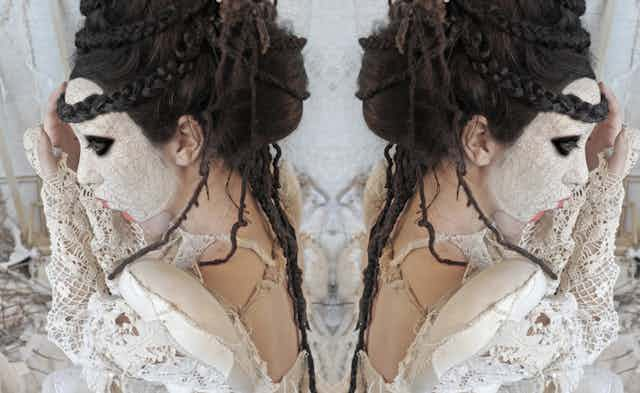During an out-of-body experience (OBE) a person finds his or her centre of consciousness displaced from their physical body.
Research suggests around 10% of people have had an OBE, where they have experienced leaving their body and viewing it from a different location in the room.
During an OBE people typically see themselves from a different place in the room, hovering above, or standing next to, their body.
One study found 37% of people who have these experiences are capable of inducing them wilfully. In a recent research study I conducted, I found that this number is in fact as high as 45%.
Meditation, visualisation and guided relaxation techniques have been related to induced OBEs. Such factors could account for some individuals being more capable of inducing their own OBEs.
This leaves us with an interesting question:
Why would someone seek the experience of stepping outside of their own body?

Research suggests that an OBE is a hallucination – it happens in the mind. Yet despite this, the experience of travelling beyond the boundaries of the body is still appealing to many.
A 2004 study suggested that a sense of separation from one’s body could be beneficial as a form of therapy – such as for treating anxiety or panic disorders.
Though research into inducing OBEs is still emerging, research psychologists and clinical psychologists alike are beginning to consider the implications.
Inducing an out-of-body experience
Recent research has utilised an experiment called the body-swapping illusion to simulate a version of OBE. The video below shows this illusion in action:
During the body-swapping illusion a person wears a head-mounted display which is connected to a video camera feed. The video camera is, in some cases, connected to the forehead of another individual.
This gives the impression that one’s awareness has shifted from one’s own body to the second body.
Other researchers have attempted to utilise variations of the body-swapping illusion in order to simulate the sense of body displacement.
One example of this includes the “very long arm” illusion experiment published earlier this year.
In this experiment researchers simulated the sense of a participant’s arm growing in length with the use of contradictory visual and tactile input – as per the video below:
Current research based on body-swapping experiments suggests that our sense of “whole body” perception can be altered. Such experiments provide valuable insight into the nature of OBEs.
Ongoing research into the body-swapping illusion could also help us understand why OBEs occur. Additionally, research may help us devise techniques for simulating (and inducing) more realistic OBEs.
Have you ever wondered what it would feel like to step outside of yourself for a moment and to look back at your own body?
In the future, this might just be possible.

